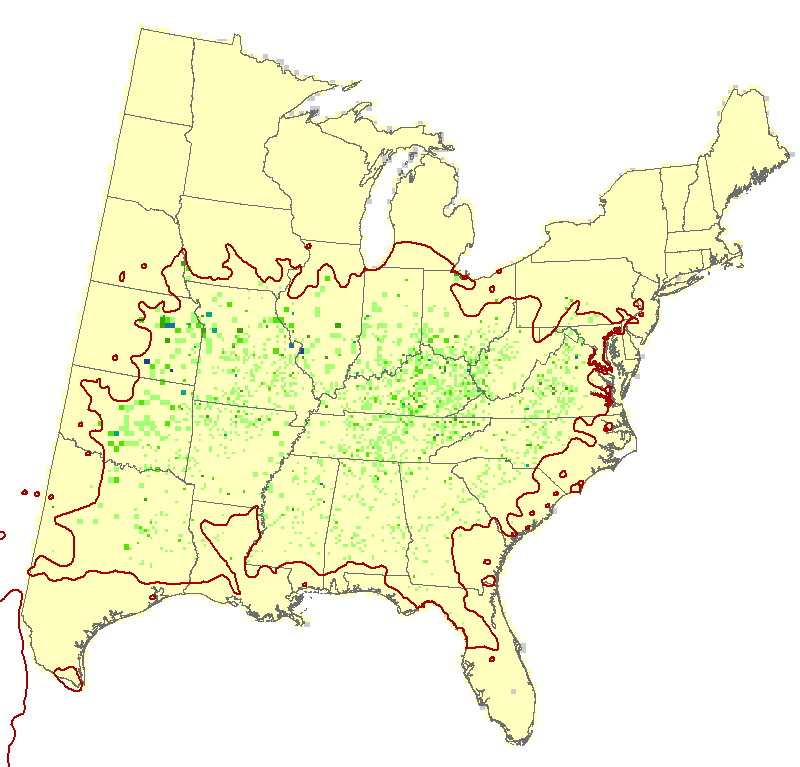eastern redbud (Cercis canadensis)
Model Reliability: Low
| GCM SCENARIO | % Area Occ | Ave IV | Sum IV | Future/Current IV |
|---|---|---|---|---|
| Actual | 7.4 | 1.9 | 4199 | N/A |
| RFimp | 6.7 | 1.2 | 2322 | 0.55 |
| CCSM45 | 13.1 | 0.8 | 3221 | 1.39 |
| CCSM85 | 21.8 | 0.8 | 5365 | 2.31 |
| GFDL45 | 21.7 | 0.9 | 5557 | 2.39 |
| GFDL85 | 32.3 | 0.9 | 8481 | 3.65 |
| HAD45 | 22.8 | 0.8 | 5630 | 2.42 |
| HAD85 | 34 | 0.8 | 8107 | 3.49 |
| GCM45 | 25.5 | 0.6 | 4803 | 2.07 |
| GCM85 | 37.4 | 0.7 | 7318 | 3.15 |
Regional Summary Tree Tables
Summaries for tree species are available for a variety of geographies, in both PDF and Excel format. These summaries are based on Version 4 of the Climate Change Tree Atlas
Interpretation Guide
Redbud is a sparse, low IV species scattered (6.9% of area) within in the central latitudes of the region. It has a low reliable model suggesting an increase in suitable habitat especially under RCP 8.5 (but still within the range of 'No change' as it is a rare species). The increase in suitable habitat (primarily under RCP 8.5) was not modeled by SHIFT to reach the northern areas within 100 years, however. It is moderately adaptable such that its overall capability rating to deal with the changing climate is fair.
Family: Caesalpiniaceae/Leguminosae
Guild: opportunistic, dispersal limited (large-seeded)
Functional Lifeform: small deciduous tree
| 4.9 | 0.90 |
| -0.03 |  |
MODFACs
What traits will impact eastern redbud's ability to adapt to climate change, and in what way?:



